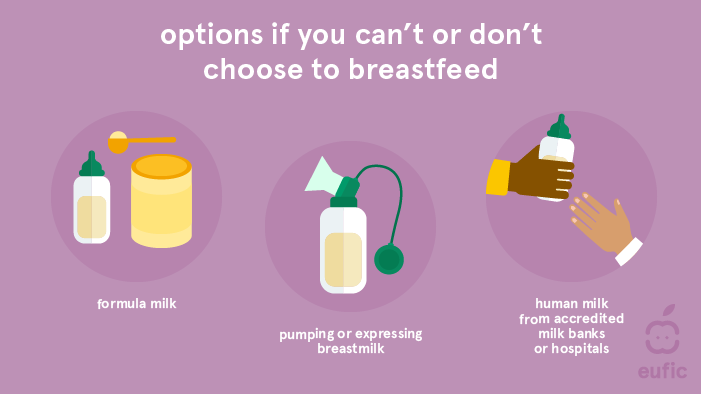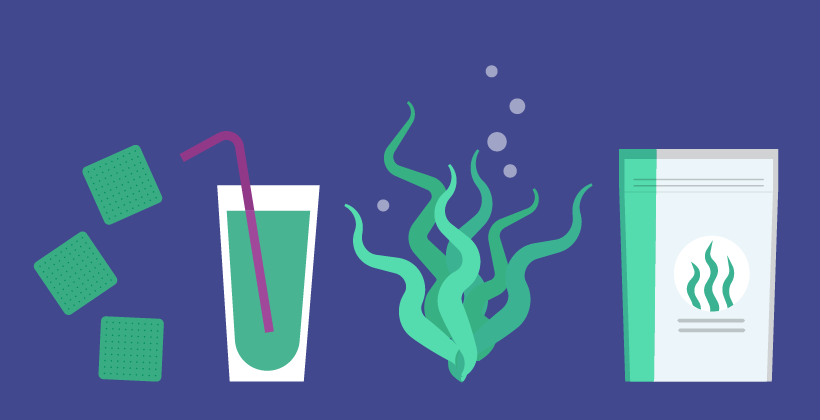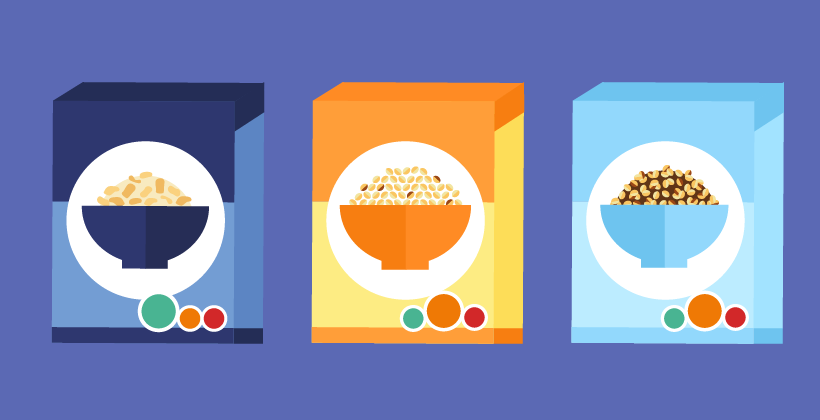The benefits of breastfeeding for parents and baby
Last Updated : 01 August 2021Breastmilk is the best form of nutrition for your baby. It provides the nutrients your baby needs to grow and develop and helps the child to fight infections during infancy. It also has benefits for those who are breastfeeding. Yet, some people are unable to breastfeed, and others may choose not to. There are good alternatives to breastfeeding, such as formula feeding or mixed feeding. This article provides an overview of the benefits of breastfeeding and information about alternative feeding methods.
What are the health benefits for the baby?
Breastfeeding is recommended around the world as the best source of nutrition and hydration for babies. In addition, breastfeeding protects babies against certain infections and other conditions in early childhood. Any amount of breastmilk is protective, but the longer you breastfeed the greater the benefits.1
Babies who are breastfed exclusively for at least 6 months are less likely to develop:2-6
- Gastrointestinal infections (diarrhoea and vomiting)
- Ear infections and respiratory infections
- Inflammatory bowel diseases
- Sudden infant death syndrome (SIDS)
- Asthma and wheezing
- Childhood leukaemia.
Breastmilk is made up of almost 90% water, along with the fats, proteins, carbohydrates and micronutrients babies need to grow. It also contains other components, such as antibodies, antioxidants, growth factors, and hormones. Antibodies and other immune molecules in breastmilk are believed to play an essential role in the protection of babies from infections.1,2
When you are exposed to any bacteria or virus, your body produces antibodies to fight it off. When breastfeeding, these antibodies will be passed on through breastmilk and will protect the baby against infections and illnesses. When a baby does get sick, they frequently pass on germs to their parents, causing their immune system to respond and make antibodies. These antibodies can be passed on to the baby through breastfeeding, to support the baby in fighting their infection.7
Research has shown some additional potential long-term benefits of breastfeeding, including a lower risk of developing diabetes and obesity in adulthood.2 The bacteria in breast milk may also further enhance the baby’s health by preventing disease-causing microorganisms to grow and promoting growth of beneficial microbes in the gut.8
What are the health benefits for the breastfeeding mother?
Breastfeeding also has some health benefits for the breastfeeding mother. In the short term, breastfeeding helps support quicker recovery after delivery. The hormone oxytocin, which is produced during breastfeeding, causes the uterus to contract, bringing it back to its original size and reduces the amount of bleeding after birth.9
Breastfeeding may also lower the risk of developing breast and ovarian cancer, type 2 diabetes and high blood pressure of those breastfeeding.2
How long should I breastfeed?
The World Health Organization (WHO) recommends exclusive breastfeeding for at least 6 months. ‘Exclusive’ means only feeding breastmilk, no water or any other fluids or solids. It is usually recommended to introduce complementary (solid) foods at 6 months of age, alongside continued breastfeeding for up to 2 years or for as long as both you and your baby enjoy it.10 Even if you breastfeed for a shorter period than the recommended 6 months, it is more beneficial than not breastfeeding at all.
Some scientific research indicates that introducing foods alongside breastfeeding between 4 and 6 months of age is helpful in the prevention and management of food sensitivities and allergies.11, 12 This is why certain national guidelines already advise to introduce mixtures of fruits and vegetables, and small amounts of common allergens such as egg and peanut, from 4 months of age and onwards (e.g. Belgium and the Netherlands). It is also important to introduce each new food one at a time, to more easily identify potential intolerances or allergies.
What if I cannot breastfeed?
Breastfeeding may be challenging and can be stressful and painful. Problems such as low milk supply, sore and cracked nipples, breast engorgement or breast infection, may affect breastfeeding.13 Some babies have difficulties with latching on properly or suckling effectively. Combining breastfeeding with returning to work can also be a major challenge.14 Occasionally, mothers are unable to breastfeed as their bodies do not produce any or too little milk for the new-born baby.
If you are struggling to breastfeed, your doctor, midwife or a lactation specialist can offer support and guidance to help you towards a positive breastfeeding experience.
If you cannot, or choose not to, breastfeed, there are several good and healthy alternatives, including formula feeding or exclusive pumping. Some people prefer the flexibility of mixed feeding, which is a combination of feeding breast milk and formula. It is good to be aware of the differences between breastfeeding and formula feeding before making a decision that is right for you.
Pumping or expressing breastmilk and feeding your baby with a bottle is a good way to still offer the baby the benefits of breastmilk if exclusive breastfeeding is not possible or desired. Many breastfeeding mothers start pumping breastmilk when they go back to work or if they experience problems with breastfeeding. Some breastfeeding mothers express their milk by hand, while others use a pump. The baby can receive exclusively expressed milk, or this can be combined with breastfeeding and/or formula feeding. However, be mindful of safe storage and reheating of expressed milk. Expressed milk can be kept refrigerated (at 4°C or lower) and used within 3-4 days, or it can be safely frozen for up to 6 months.
If someone has problems breastfeeding, one alternative is to provide the baby with milk donated by someone else,15 however this is usually a short-term solution carried out in hospital settings. Donated breast milk is available at human milk banks. Donated milk should be properly screened to ensure the milk is safe and should only obtained through official milk banks. It can also be difficult to obtain the quantity of milk that you need to feed a baby exclusively on donated milk. Please consult your doctor before deciding to feed your baby donated milk.

Is breastfeeding in public legal?
Some people might feel uncomfortable around breastfeeding in public. However, breastfeeding in public, for example in parks, restaurants, and public transport, is legally protected in most European countries.16
Making the right choice for you and your baby
In most cases, breastmilk is the recommended option for babies, due to the health benefits described in this article. Although breastfeeding can be challenging during the first weeks after delivery, it can also be a wonderful experience for both the breastfeeding mother and the baby. Remember that your doctor, midwife or a lactation specialist are there to support the process of learning to breastfeed. Ultimately, only you can know what works best for you and your baby and, if needed, there are safe and healthy alternatives like expressed milk and formula.
References
- Vitoria C, et al. (2016). Breastfeeding in the 21st century: Epidemiology, mechanisms, and lifelong effect. The Lancet, 387(10017):475-490.
- Netherlands National Institute for Public Health and the Environment (RIVM) (2015) Health effects of breastfeeding: an update, Systematic literature review.
- Horta BL & Victora CG (2013) Short-term effects of breastfeeding: a systematic review on the benefits of breastfeeding on diarrhoea and pneumonia mortality. Geneva, Switzerland: World Health Organization.
- Frank NM, et al. (2019) The relationship between breastfeeding and reported respiratory and gastrointestinal infection rates in young children. BMC pediatrics 19(1):339.
- Dogaru CM, et al. (2014) Breastfeeding and childhood asthma: systematic review and meta-analysis. American Journal of epidemiology 179(10):1153-1167.
- Amitay EL & Keinan-Boker L (2015) Breastfeeding and childhood leukemia incidence: a meta-analysis and systematic review. JAMA Pediatrics 169(6):e151025-e151025.
- Ballard JD, Morrow, AL (2014) Human milk composition: Nutrients and bioactive factors. Pediatric Clinics of North America 60(1):49-74.
- Lyons, K.E.; Ryan, C.A.; Dempsey, E.M.; Ross, R.P.; Stanton, C. Breast Milk, a Source of Beneficial Microbes and Associated Benefits for Infant Health. Nutrients 2020, 12, 1039
- World Health Organization (WHO) (2009). Infant and young child feeding: model chapter for textbooks for medical students and allied health professionals. Geneva, Switzerland: World Health Organization.
- World Health Organization (WHO). Breastfeeding.
- Larson K et al. (2017) Introducing Allergenic Food into Infants' Diets: Systematic Review. MCN: The American Journal of Maternal/Child Nursing 42(2):72-80.
- Fewtrell M, Bronsky J, Campoy C, Domellöf M, Embleton N, Fidler Mis N, Hojsak I, Hulst JM, Indrio F, Lapillonne A, Molgaard C. Complementary Feeding: A Position Paper by the European Society for Paediatric Gastroenterology, Hepatology, and Nutrition (E
- Berens PD (2015) Breast pain: engorgement, nipple pain, and mastitis. Clinical obstetrics and gynecology 58(4):902-914.
- Lauer EA et al. (2019) Identifying barriers and supports to breastfeeding in the workplace experienced by mothers in the New Hampshire special supplemental nutrition program for women, infants, and children utilizing the total worker health framework.
- World Health Organization (WHO). (2003). Global strategy on infant and young child feeding. Geneva, Switzerland: World Health Organization.
- Komodiki E et al. (2014). Breastfeeding in public: a global review of different attitudes towards it. Journal of Pediatrics & Neonatal Care 1(6):00040.





